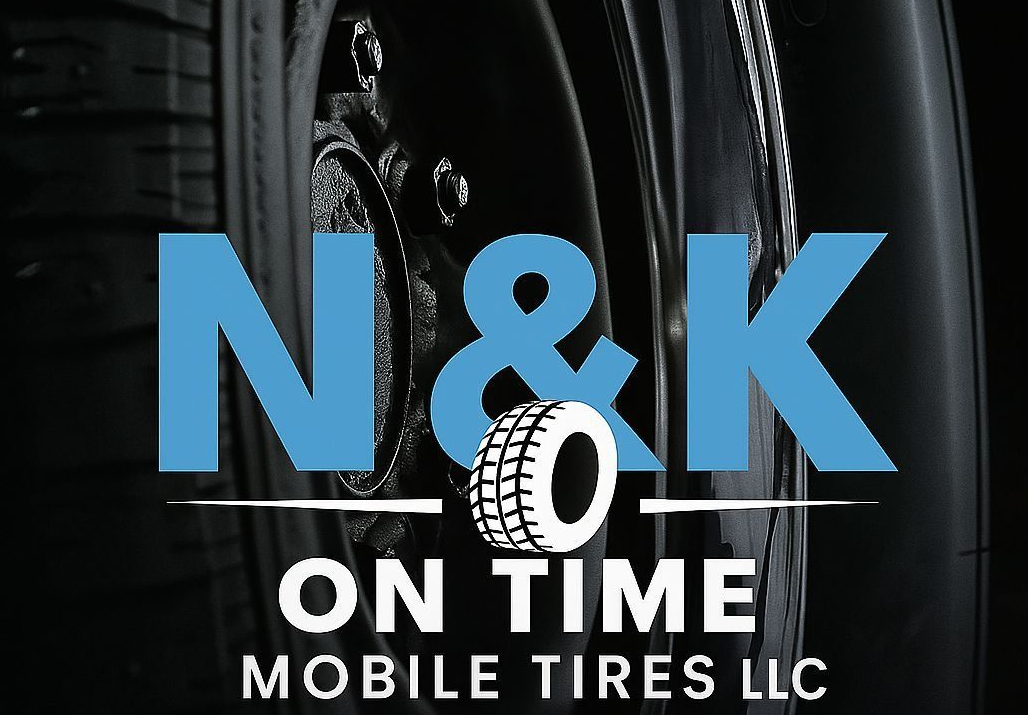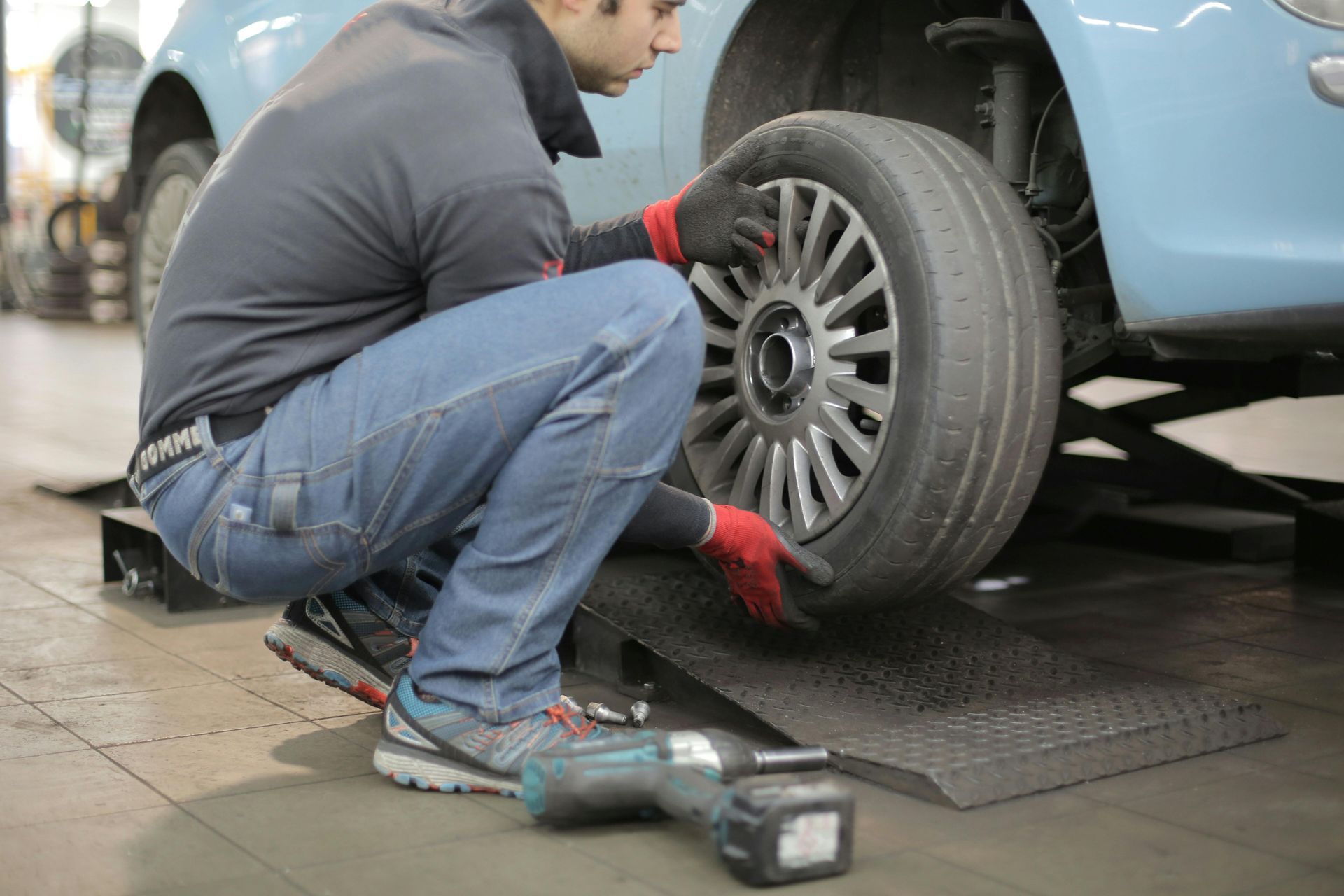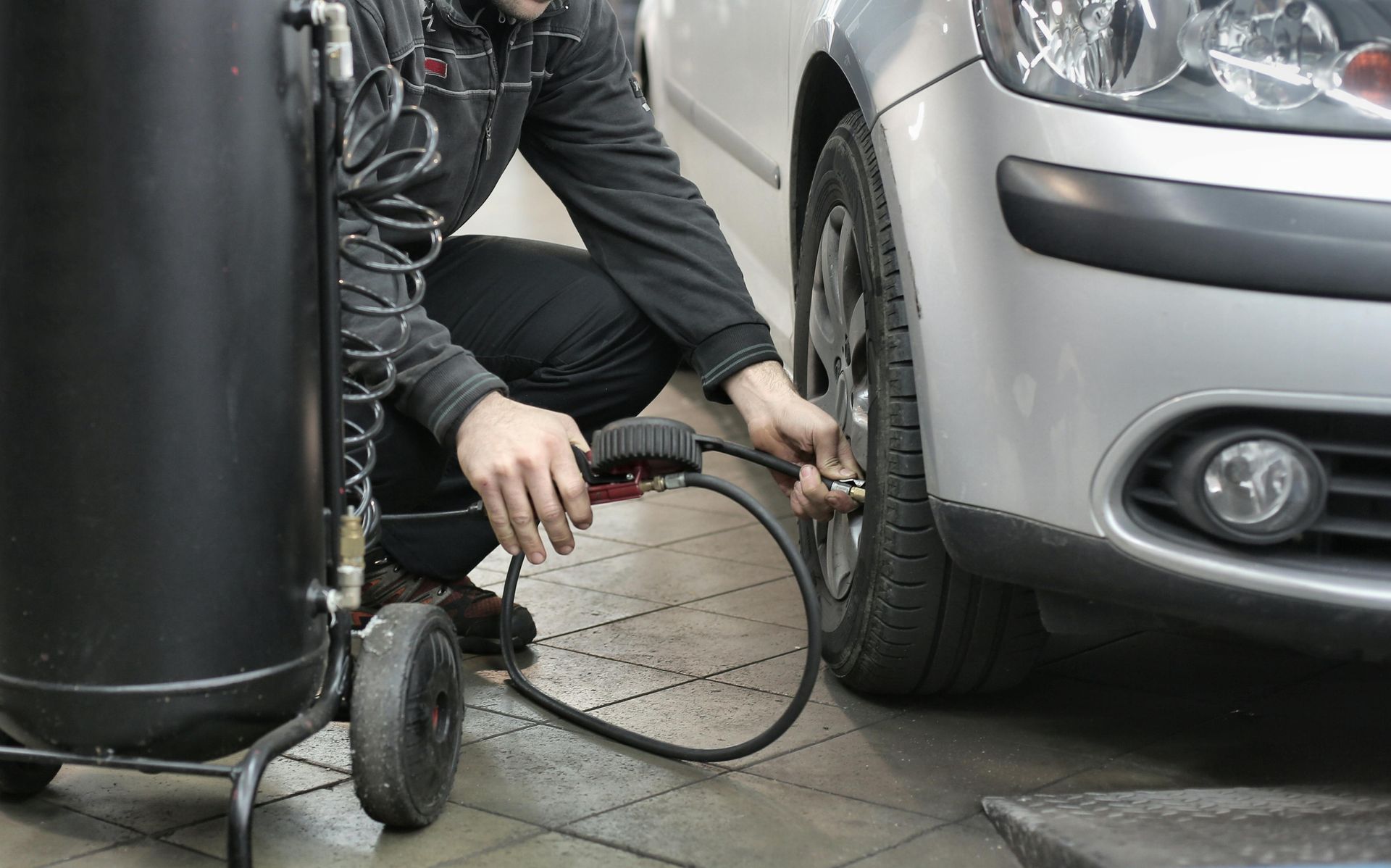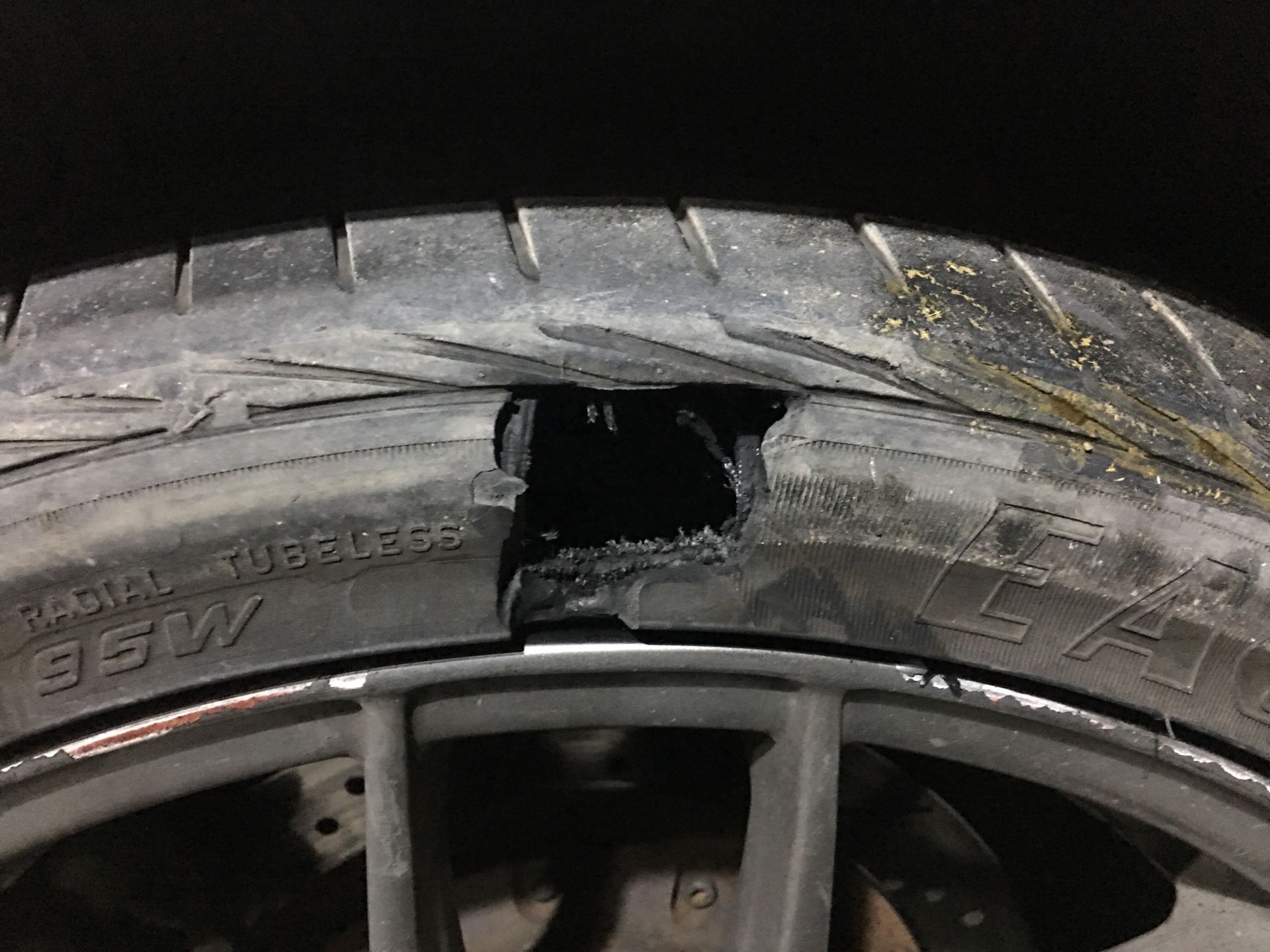The Complete Tire Maintenance Guide for Florida Drivers
Florida's unique driving conditions present distinct challenges for vehicle owners. The combination of intense heat, frequent rainfall, and coastal humidity creates an environment that demands particular attention to tire care. The answer to the question “what does tire maintenance mean?” should be understood by drivers for them to navigate the Sunshine State's roads safely and efficiently.
Proper tire care extends beyond occasional inspections. It involves regular monitoring, timely interventions, and knowing when professional services are necessary. Whether you're commuting through Miami's busy streets or taking weekend trips along the coast, maintaining your tires in optimal condition protects your investment and ensures your safety on the road.
This comprehensive guide walks you through everything Florida drivers need to know about maintaining their tires. From understanding basic maintenance practices to recognizing when you need professionals offering tire plug and patch mobile services in South Florida, you'll gain the knowledge to keep your vehicle performing at its best year-round.
Key Takeaways
- Regular tire pressure checks are critical in Florida's fluctuating temperatures and should be performed at least monthly
- Tire rotation every 5,000 to 7,000 miles helps ensure even wear and extends tire lifespan
- Florida's rainy season demands adequate tread depth of at least 4/32 inches for safe driving
- Heat and humidity accelerate tire aging, making regular visual inspections essential for spotting damage early
- Drivers should immediately seek professional services like Tire Repair and Tire Replacement when damage is detected
- Following a consistent tire maintenance schedule prevents unexpected failures and costly replacements
Tire Maintenance Fundamentals
In practical terms, what does tire maintenance mean? It includes all activities designed to keep your tires functioning safely and efficiently throughout their lifespan. This involves monitoring air pressure, inspecting for damage, rotating tires regularly, checking tread depth, and ensuring proper alignment and balance.
Many drivers wonder which of the following is not considered proper tire maintenance. Activities that don't qualify include using tire shine products that contain petroleum distillates (which can damage rubber), over-inflating tires beyond manufacturer specifications, or mixing different tire types on the same axle. These practices actually harm tire integrity rather than preserve it.
Essential Tire Maintenance Tips for Florida Conditions
Florida's climate requires specific tire maintenance tips tailored to local conditions. Heat is perhaps the most significant factor. Asphalt temperatures can exceed 140 degrees Fahrenheit during summer months, causing air inside tires to expand and increasing pressure levels throughout the day.
Pressure Management Strategies
- Check pressure when tires are cold - Perform inspections in the morning before driving. Florida's temperature swings can cause pressure variations of as much as 3-5 PSI.
- Use manufacturer specifications - Always reference the recommended pressure on the driver's door jamb sticker, not the maximum pressure on the tire sidewall.
Tread Depth Monitoring
- The penny test - Insert a penny into the tread with Lincoln's head upside down. If you can see the top of his head, your tires need replacement.
- Minimum depth requirements - Maintain at least 4/32 inches for Florida's wet conditions during the rainy season from May through October.
Visual Inspection Guidelines
Inspect sidewalls monthly for signs of weather damage. UV exposure and ozone from coastal areas accelerate rubber degradation.
- Look for surface cracks - Small cracks indicate UV damage and aging rubber.
- Check for bulges or blisters - These indicate internal damage requiring immediate replacement.
- Note discoloration - Fading suggests rubber deterioration from sun exposure.
Creating Your Tire Maintenance Schedule
Establishing a tire maintenance schedule keeps your vehicle safe and helps avoid unexpected problems. Consistency matters more than perfection. Regular attention catches small issues before they become major concerns requiring expensive repairs or premature replacement.
Tire Maintenance Schedule
| Tire Maintenance Task | Frequency | Notes for Florida |
|---|---|---|
| Pressure Check | Monthly (minimum) | Check more frequently during extreme heat |
| Visual Inspection | Monthly | Look for UV damage and debris |
| Tread Depth Check | Every 3 months | Critical before rainy season |
| Tire Rotation | 5,000-7,000 miles | Promotes even wear |
| Alignment Check | Annually or as needed | After hitting potholes or curbs |
| Balance Check | With rotation or as needed | If vibration occurs |
Your time maintenance guide should account for driving patterns. High-mileage drivers need more frequent rotations. If you frequently drive on rough roads, you should inspect your tires more often.
Recognizing When Professional Services Are Needed
While regular monitoring falls within most drivers' capabilities, certain situations require professional expertise. Knowing when to seek Tire Repair services prevents minor issues from escalating into dangerous failures.
Punctures in the tread area measuring less than 1/4 inch in diameter can often be repaired safely. However, sidewall damage, multiple punctures close together, or damage to the shoulder area typically requires tire replacement. Professionals assess whether the repair meets safety standards or if replacement becomes necessary.
Companies offering tire plug and patch mobile services in South Florida bring expertise directly to your location. Professional mount & balance services correct balance and alignment issues using specialized equipment that ensures tires spin true and wear evenly.
Common Tire Maintenance Mistakes to Avoid
Understanding which of the following is not considered proper tire maintenance helps drivers avoid damaging their tires through well-intentioned but misguided practices. Many common errors stem from misconceptions about tire care or simply overlooking important maintenance aspects.
Pressure-Related Mistakes
- Visual inspection only - Tires can appear properly inflated while running several PSI below optimal levels, reducing fuel efficiency and increasing wear. Always use a quality pressure gauge for accurate readings.
- Checking hot tires - Measuring pressure after driving gives falsely high readings due to heat expansion. Wait at least three hours after driving or check before your first trip of the day.
- Ignoring the spare - Many Florida drivers forget to check spare tire pressure until they need it during an emergency. Spare tires, especially temporary compact types, require higher pressure than regular tires and should be checked quarterly.
Installation and Replacement Errors
Mixing tire types presents safety concerns that many drivers underestimate.
- Mismatched tire types - Using different brands, tread patterns, or sizes on the same axle affects handling characteristics and may cause the vehicle to pull to one side.
- Uneven replacement - When replacing tires, match the specifications of existing tires or replace all four simultaneously for best results.
- Wrong tire for conditions - Installing performance tires designed for dry conditions when you frequently drive in rain compromises safety.
Maintenance Neglect
- Skipping alignment checks - Ignoring wheel alignment after impacts seems harmless but accelerates tire wear dramatically. Florida's roads contain numerous potholes, especially after heavy rains.
- Alignment warning signs - If your vehicle pulls to one side or the steering wheel sits off-center while driving straight, schedule an alignment check promptly.
- Rotation delays - Postponing tire rotations beyond the recommended interval creates uneven wear patterns that cannot be reversed.
Maximizing Tire Lifespan in Florida's Climate
Florida's environmental conditions challenge tire longevity in ways drivers from other regions might not experience. The combination of heat, humidity, and UV exposure creates a harsh environment for rubber compounds. Understanding these challenges helps drivers take preventive measures that significantly extend tire life.
Environmental Protection Strategies
- Seek covered parking - Parking in shade reduces UV exposure. Covered parking provides the best protection, but even parking under trees helps.
- Coastal considerations - Salt air near beaches accelerates rubber degradation. Rinse tires periodically if you live in coastal areas.
Proper Inflation Practices
- Under-inflation dangers - Under-inflated tires generate excessive heat through increased flexing, which accelerates deterioration in Florida's hot climate.
- Over-inflation problems - Over-inflation reduces the contact patch, causing center tread wear and making tires more susceptible to impact damage.
- Regular monitoring - Check pressure monthly at minimum, and weekly during extreme heat waves.
Driving Habits That Extend Tire Life
- Avoid aggressive acceleration - Rapid acceleration generates excessive heat and wears the tread faster.
- Brake smoothly - Hard braking creates flat spots and accelerates wear. Anticipate stops and brake gradually.
- Reduce high-speed cornering - Taking corners at high speeds stresses tire sidewalls and increases heat buildup.
Age and Condition Monitoring
- Six-year replacement guideline - Most manufacturers recommend replacement after six years, with a maximum life of ten years from the manufacturing date.
- Check DOT codes - The last four digits on the sidewall indicate the week and year of manufacture.
- Watch for age-related damage - Older tires develop sidewall cracks and lose flexibility even with good tread depth.
Cleaning and Maintenance
- Use mild cleaners - Avoid harsh chemicals that strip protective compounds from the rubber. Use mild soap and water instead.
- Pay attention to valve stems - Clean around the valve stem where debris accumulates and can cause slow leaks.
Recognizing Wear Patterns
- Feathering - Tread feathering indicates alignment issues that need correction.
- Center wear - Excessive wear in the center suggests chronic over-inflation.
- Edge wear - Worn edges with good center tread points to persistent under-inflation.
- Cupping or scalloping - This reveals suspension problems or imbalanced wheels.
Seasonal Considerations for Florida Tire Care
While Florida doesn't experience traditional winter weather, seasonal changes still affect tire maintenance needs. Summer months bring extreme heat that tests tire durability, with temperatures inside a tire reaching 150 degrees or higher.
Hurricane season from June through November creates additional hazards. Heavy rainfall floods roads and hides debris that can puncture tires. Before hurricane season begins, inspect your tires thoroughly and address any concerns. Tourist season impacts Florida roads differently across regions, with increased traffic during winter months in South Florida and year-round congestion near Central Florida theme parks.
Frequently Asked Questions
How often should I check my tire pressure in Florida?
Check tire pressure at least monthly, and more frequently during summer when temperatures fluctuate significantly. Always check when tires are cold for accurate readings.
What tire tread depth is safe for Florida's rainy season?
Maintain at least 4/32 inches of tread depth for adequate wet weather traction. Replace tires when tread reaches 2/32 inches, which is the legal minimum.
Can I repair a tire myself or should I use professional services?
While temporary fixes exist, professional tire repair services ensure repairs meet safety standards and last. Improper repairs can fail catastrophically at highway speeds.
How does Florida's heat affect tire lifespan?
High temperatures accelerate rubber deterioration and can reduce tire lifespan by 25-30% compared to moderate climates. Regular inspections and proper inflation help mitigate heat damage.
When should I rotate my tires?
Rotate tires every 5,000 to 7,000 miles to promote even wear. Follow your vehicle manufacturer's recommended rotation pattern for best results.
Final Thoughts
Tire maintenance represents one of the most important aspects of vehicle ownership for Florida drivers. The state's unique climate and road conditions demand consistent attention to tire health. Following a regular tire maintenance schedule, conducting visual inspections, and monitoring pressure levels form the foundation of proper tire care.
Professional services complement your personal maintenance efforts. Whether you need routine Mount & Balance services, emergency Tire Repair, or complete Tire Replacement, knowing when to seek expert help protects your safety and investment. Mobile services bring convenience to your location without compromising quality or safety standards.
Your tires are the only contact points between your vehicle and the road. Taking time to understand what does tire maintenance mean and implementing these tire maintenance tips ensures you drive safely regardless of weather conditions. Stay proactive, follow your maintenance schedule, and address issues promptly to enjoy reliable performance from your tires for years to come.
Book your fast mobile tire repair in South Florida today! Click to schedule for safer drives!
Reference:
https://speedwaymedia.com/2025/09/04/to-patch-or-to-replace-a-comprehensive-guide-to-flat-tire-repair-decisions/



